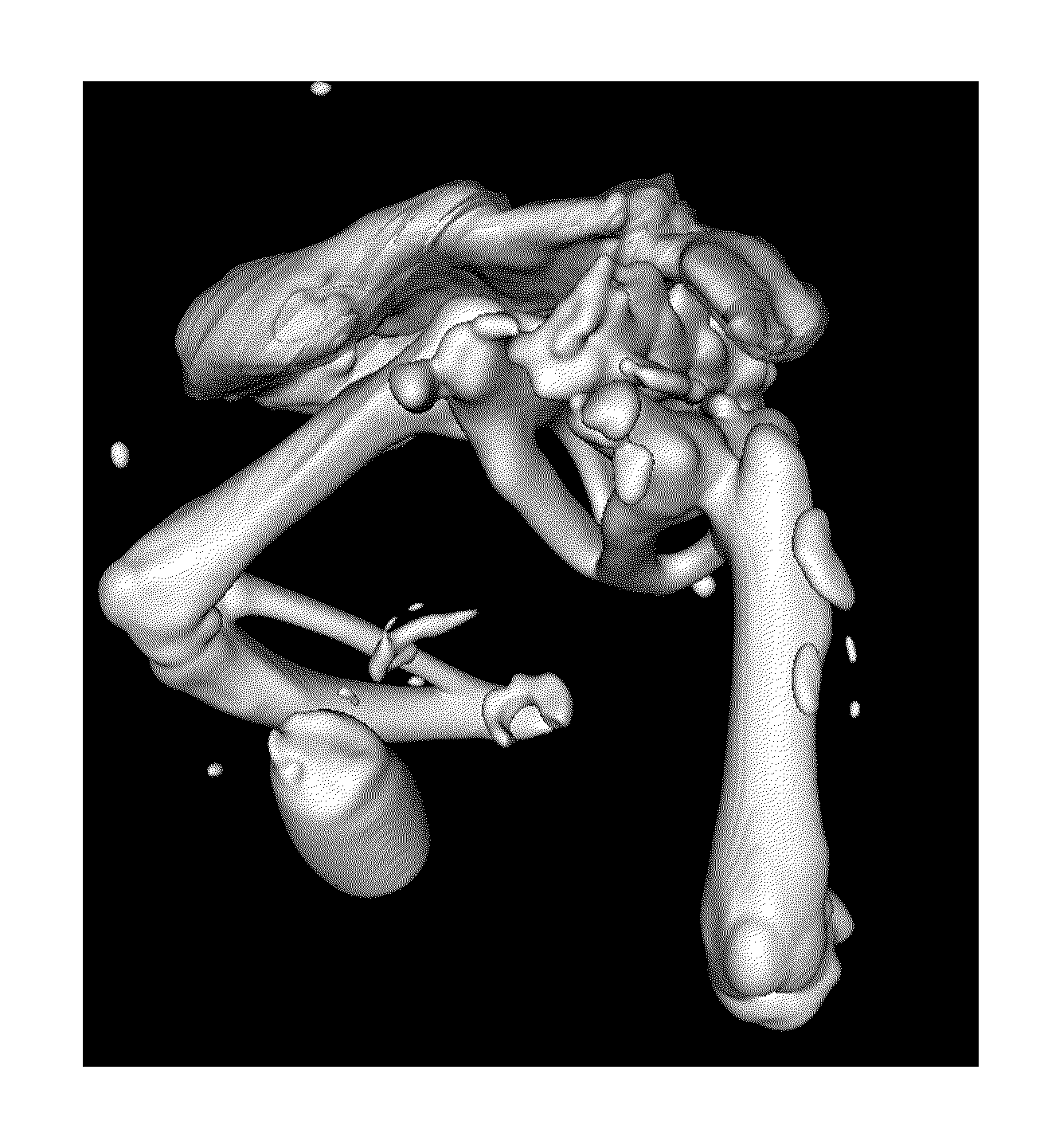Use of immobilized antagonists for enhancing growth factor containing bioimplant effectiveness
a technology of immobilized antagonists and bioimplants, which is applied in the field of bioimplant materials, can solve the problems of poor protection, limited effectiveness of carriers, and high treatment costs, and achieve the effects of enhancing the retention of exogenous growth factors, and enhancing the effectiveness of growth factor-containing bioimplants
- Summary
- Abstract
- Description
- Claims
- Application Information
AI Technical Summary
Benefits of technology
Problems solved by technology
Method used
Image
Examples
example 1
An In Vitro Assay to Evaluate Antagonists of BMPs
[0086]An antagonist for a growth factor (GF) can be identified as such by incubating it with the growth factor and then exposing it to GF responsive cells and demonstrating that the effect of the GF is inhibited by the antagonist.
[0087]To demonstrate this recombinant human BMPs (rhBMPs) were incubated with different amounts of recombinant mouse Noggin (rmNGN) or bovine fetuin and then the mixture was added to cultures of C2C12 cells to test for BMP activity.
[0088]Materials & Methods
[0089]Recombinant human BMP-2 (rhBMP-2), rhBMP-4 and recombinant mouse Noggin (rmNoggin) were obtained from RnD Systems (Cat # 355-BM-010 / CF, 314-BP-010, 1967-NG). Bovine fetuin (bAHSG) was purchased from Sigma Aldrich (Cat #F6131). Stock solutions were prepared as described by the manufacturers.
[0090]In vitro BMP-2 Activity Assay: Alkaline Phosphatase Induction in C2C12 Cells:
[0091]The activity of recombinant hBMP proteins was quantified based upon stimula...
example 2
An In Vitro Assay for TGFβ Antagonists
[0101]In vitro assays for TGFβ activity are well known in the art (see Garrigue-Antar et al. J Immunol Methods. 1995 Oct. 26; 186(2):267-74; Kim et al. Arch Pharm Res Vol 25, No 6, 903-909, 2002, Tesseur et al. BMC Cell Biol. 2006 Mar. 20;7:15).
[0102]By using testing mixtures of β and potential antagonists it is possible to evaluate the efficacy of the antagonist has been described in the art (Tsang, M. et al., 1995, Cytokine 7:389) and as described below.
[0103]Materials & Methods
[0104]Human TGFβ1, -β2 and -β3 and the TGFβ latency associated peptide (LAP) are obtained from RnD Systems (Cat# 240-B-002, 302-B2-010, 243-B3-002, 246-LP) and stock solutions are prepared as recommended by the manufacturer to make 200 μM stock solutions.
[0105]Stock cultures of Mv-1-Lu mink lung epithelial cells are obtained from the ATCC (Cat # CCL-64) are grown in alpha MEM supplemented with 10% fetal bovine serum. At the time of assay the cells are subcultured and re...
example 3
An In Vitro Bioassay for Insulin Like Growth Factor (IGF) Antagonists
[0110]Assays for IGF activity are well known in the art (see Van Zoelen, Prog. Growth Factor Res, 1990, 2: 131-152, Karey, K. P. et al., Cancer Research, 1988, 48:4083 and Olebruck et al. Toxicology Let. 1998, 96,97:85-95). These assays can also be used to demonstrate whether a substance is an IGF antagonist as described below.
[0111]Materials & Methods
[0112]IGF-1, IGF-2, IGFBP-1, -2, -3, -4, -5, -6 and soluble IGF-IIR are obtained from RnD Systems (Cat # 291-G1, 292-G2, 871-B1, 674-B2, 675-B3, 804-GB, 875-B5, 876-B6, 2447-GR).
[0113]The MCF-7 cell-line is obtained from the ATCC (cat # HTB-22) and is cultured in DMEM (Invitrogen) containing 5% fetal bovine serum (FBS).
[0114]At time of seeding 100 μl solutions of 5,000 / cells ml are plated into wells of a 96-well tissue culture plate. After 24 h the medium is changed to serum-free DMEM containing 0.15% bovine serum albumin (BSA). After the medium-change, the cells are ...
PUM
| Property | Measurement | Unit |
|---|---|---|
| Fraction | aaaaa | aaaaa |
| Fraction | aaaaa | aaaaa |
| Fraction | aaaaa | aaaaa |
Abstract
Description
Claims
Application Information
 Login to View More
Login to View More - R&D
- Intellectual Property
- Life Sciences
- Materials
- Tech Scout
- Unparalleled Data Quality
- Higher Quality Content
- 60% Fewer Hallucinations
Browse by: Latest US Patents, China's latest patents, Technical Efficacy Thesaurus, Application Domain, Technology Topic, Popular Technical Reports.
© 2025 PatSnap. All rights reserved.Legal|Privacy policy|Modern Slavery Act Transparency Statement|Sitemap|About US| Contact US: help@patsnap.com



